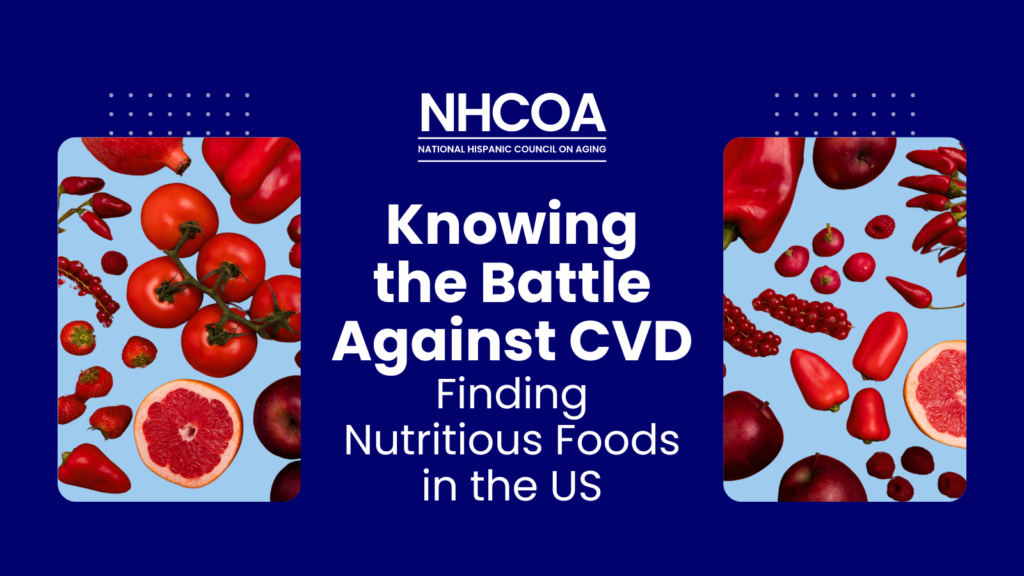
In 2024, NHCOA is aiming to give greater attention to cardiovascular diseases (CVD). In our overview of cardiovascular health amongst Latinos, we reviewed the high rates of CVD seen in the Latino community, and the risk factors that are correlated to these figures. Risk factors like obesity, high blood pressure, and type-2 diabetes all display a heavier burden upon the US Latino population. What these factors also have in common is an evident link to unhealthy life-styles that are conditioned by poor access to nutritious foods.
Consider what “food security” means to you. At first, you might think that to have access to food consistently, and eat three meals a day means that you are food secure, but there’s also the quality of that food access to consider. The US Department of Agriculture (USDA) measures food security in 4 levels:
· High food Security: No reported indications of food-access problems or limitations
· Marginal food Security: Little or no indication of changes in diets or food intake.
· Low food security: Reduced quality, variety, or desirability of diet. Little or no indication of reduced food intake.
· Very low food security: Disrupted eating patterns and reduced food intake.
In the High and Marginal levels of food security, the question is how much a household is having to compromise their diets according to what they can access. However, at the Low and Very low levels, the concern is focused purely on whether the household is able to eat enough; whether they are reducing the amount they can eat according to what they can access.
To put this in plainer terms, households who are experiencing low or very low food security, are resorting to cheaper and less nutritious foods so that they can eat at all. This is both due to what they can afford, as well as what is even available in their regions. This is what it means to be “Food Insecure.”
In a 2022 report, the USDA found that about 20% of Hispanic households in the US were experiencing food insecurity. Additionally, the report found that 12.5% of all US households living in metropolitan areas, and 14.5% of households in rural areas, were experiencing food insecurity as well. Regions and neighborhoods that show high levels of food insecurity tend to be found in what is characterized as “food deserts.” The USDA describes food deserts as areas where people have limited access to a variety of healthy and affordable food. That limited access can come from limitations in a household’s income, as well as from what types of stores are accessible in the area.
For households experiencing food insecurity, there are services in place that can help reduce the obstacles between them and more nutritious foods:
· Supplemental Nutrition Assistance Program (SNAP), is a food benefits program for low-income families and individuals to better afford nutritious foods. When enrolled in SNAP, households will receive regular deposits according to their income and number of household members.
· Double Up Food Bucks, is a program that works together with SNAP, though different states refer to currency with different names. When households spend their SNAP benefits on fresh fruits or vegetables, Double Up Food Bucks matches the money spent so they can “double-up” on those nutritious foods.
· Instacart, is a service where households can order their groceries for delivery from a variety of stores that may not be in their area. It also accepts SNAP benefits.
These programs and services do not completely solve the sprawling issue of food insecurity in the United States, but can still go a long way in bridging the gap between food insecure households and more nutritious diets. It’s important to consider what resources are available, especially when it comes to our health and well-being. If you or a member of your household carries risk factors for CVD, like obesity, high blood pressure, or type-2 diabetes, consider what you can do to improve your nutrition and help limit these risk factors.

Recent Comments